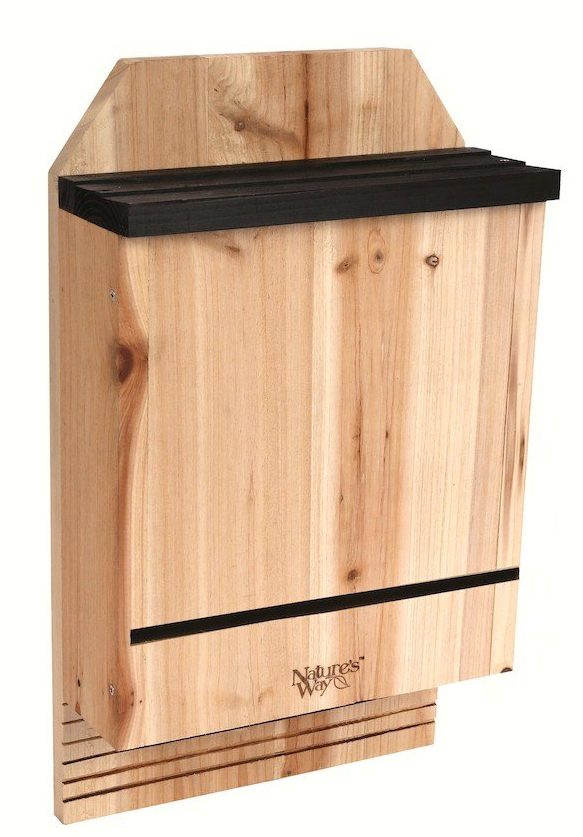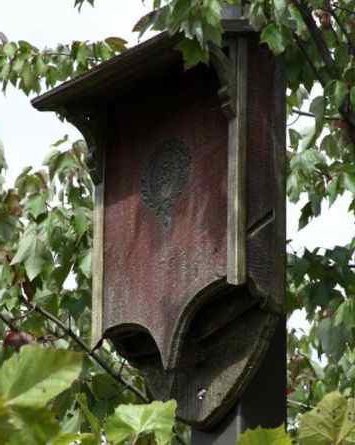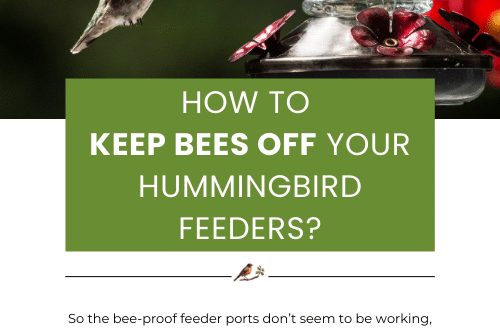-
Say What? This Tube Feeder is Bear Proof?
Could it actually be… a bear-proof bird feeder?
It’s not here yet, but due in December is a steel tube bird feeder by Birds Choice with claims to be bear resistant.
Although we’ve not seen them in our own GA backyard, many folks (both on the outskirts and in residential neighborhoods) have posted videos and pics of bears destroying their bird feeders… big time too! Whole feeding stations are decimated, and it’s highly unlikely you’ll command said bear to cease and desist either. Worse part is that it becomes habitual for them.
They’re extremely smart and considered problem solvers. Once a food source is discovered, you can bet they’ll return. They like the same foods as birds; seed mixes with black oil sunflower, peanuts, suet and sweet nectar too. That’s why Yogi and Boo-boo hung out at the park… for pic-i-nic baskets 🙂
We’ve seen large raccoons grabbing hold of hummingbird feeders with both hands and guzzle like it was beer, but it doesn’t really compare to a bear in your yard.
Wait… quite possibly we’re in their yards, thus the troubling and increasing episodes with the new urban bear and human contact. Through no fault of its own the bear usually loses, and we hear it on the news all too frequently 🙁
While this video is pretty fascinating to watch… it’s just not a good scenario in the bigger picture.
So back to the steel tube feeder: It features 5 small windows on each side to monitor seed levels and 6 perches that look large enough for cardinals’ comfort. Powder-coated steel tube holds 3.5 quarts, top removes for filling with removable bottom for clean-out. Overall measurements are 25.5″ tall x 8″ diameter, with a hefty weight of 9 lbs.
After viewing some of these bear vs. bird feeder videos, you might need to hang this one high, or secure it (really well) to something so the bear doesn’t walk off with it!
-
Grandpa’s Pet Bat Didn’t use a Bat House
They’re creepy and they’re kooky, mysterious and spooky… remember the theme song? Maybe old enough like us to mix them up with the family residing at 1313 Mockingbird Lane.
It was Grandpa from the Munster’s who had the pet bat! Only showing him in flight, I don’t recall ever seeing his bat house, can you remember his name? Regardless, both of those theme songs keep replaying in the brain.
On a more serious note, it’s believed that about 44% of bees have perished this year from pesticide poisoning, which is really scary! Like the birds & bees, bats are also major pollinators of tropical plants and fruit, they’re considered the night shift pollinators.
Thankfully, more folks are tuning into the needs of these friendly flying mammals with fur. Offering bat houses for roosting actually helps promote pollination. Aside from the thousand of insects consumed nightly, pollination is a huge draw. Especially for the agave plant, because without it- there would be no tequila!
From bat house kits and large capacity bat houses to artisan crafted bat shelters, there’s now a great variety of ways to offer proper roosting spots.
Materials vary from recycled plastic and cedar to aged barn wood for a more rustic appeal. There’s even several plans available online to build your own.
It may prove difficult at first to attract them, residing near a pond or lake greatly increase chances of occupancy. Recommended height is 12 to 15 feet, with a clear pathway to entry.
Facing SE or SW allows the bat house to receive maximum sun exposure for retained heat. Structures of brick, stone or wood are ideal mounting surfaces as they also retain heat. Metal- not so much. A pole may be easiest as the shelter can be attached while still on the ground, and then erected with bat house already secured.
Either way, bat houses are definitely something worth looking into. With holiday approaching they’d make an excellent gift for the nature-lover on your list.
And Grandpa’s bat… Igor, of course!
-
Got the Crazies Around Your Hummingbird Feeders?
The frenzy around our hummingbird feeders is later than usual this year! Folks to the north are still reporting brisk activity this last week of September. Possibly due the hottest August on record (though they say that every year) this month has been fairly steamy as well.
So at this rate, in just a few short years, the East Coast should be seeing hummingbirds close to 9 months out of the year… right? Lucky are those who see the sprites year-round, we’re envious. The end of August used to see peak migration “crazies” at feeders. Birds are fiercer than ever, with juveniles now contending for nectar as well.
Do the birds a favor and hang an extra feeder, even a cheap plastic one serves them well during migration. Nectar can be mixed a little stronger too. Pure can sugar (nothing else-no substitutes please) at a ratio of 1:4, may be kicked up a notch at 1:3. That’s one cup of sugar to 3 cups of water… and only at migration since birds are seeking to fatten up. The extra calories add fuel for their long journey to Central and South America.
Keep the nectar really fresh! During sweltering heat in the mid-90’s, it really should be changed about every other day. Our 7 hummingbird feeders keep us busy… but their delight is so worth the work! Note the pink mandevilla vine, hibiscus and penta as they also provide nectar for the sprites.
If you’ve ever placed a sprinkler out to water grass or flowers… please consider running it for the birds sometimes. Moving water, especially fresh, cool water is an absolute oasis for all songbirds. We can’t even say enough about leaf misters for feathered friends!
If you’re sad because hummingbird season is drawing to a close for your locale… don’t fret. Like Arnold, they’ll be back! It’s called site fidelity, and if hummingbirds were happy at your place this year, they do remember and return next year. It’s actually a pretty amazing cycle for such a tiny yet special little bird.
Safe travels little ones… we’ll catch ya on the flip-side!
Hummingbird Feeders
about feeders & accessories

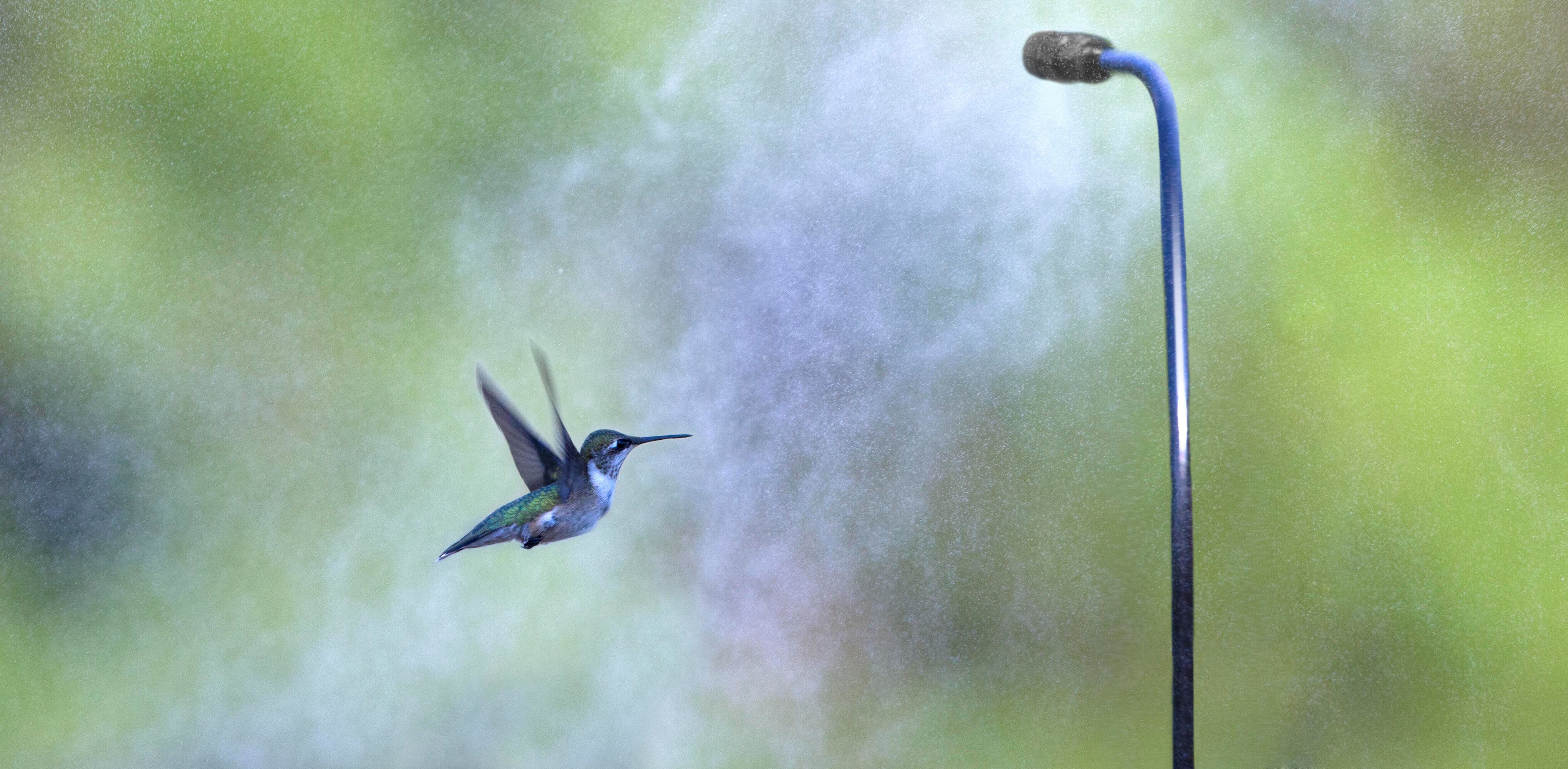
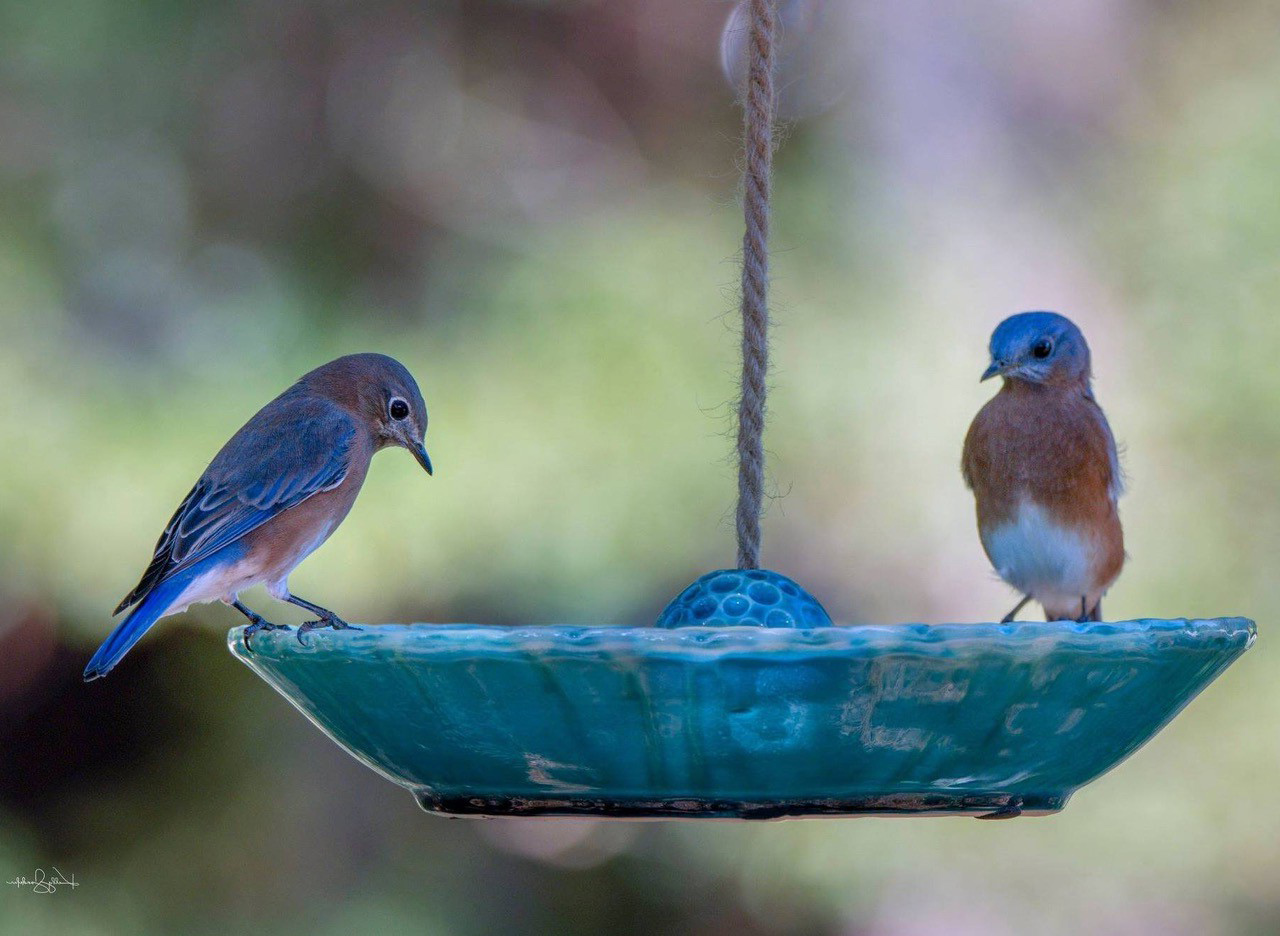
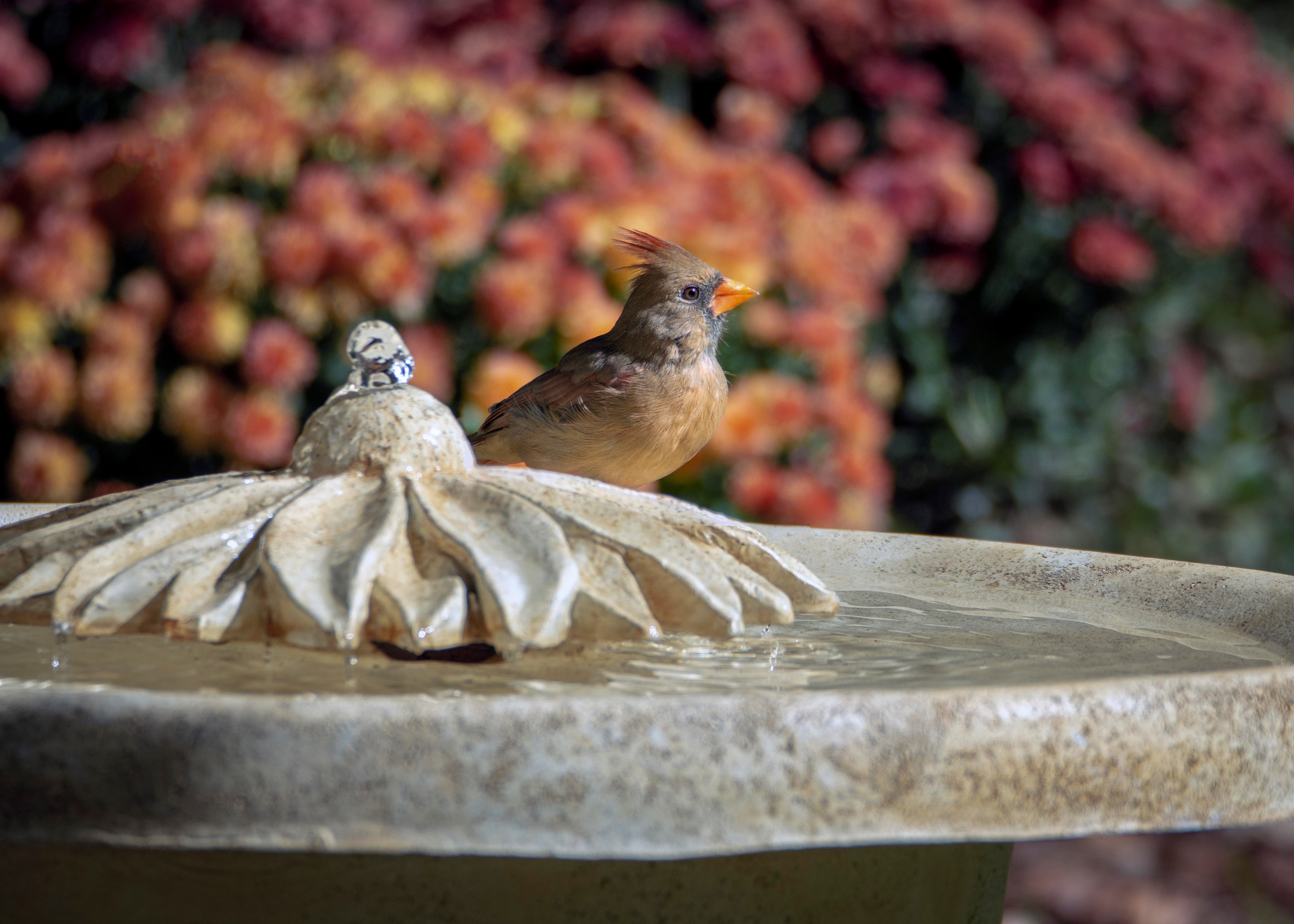
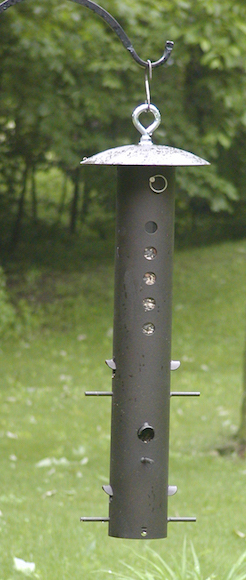 Could it actually be… a bear-proof bird feeder?
Could it actually be… a bear-proof bird feeder?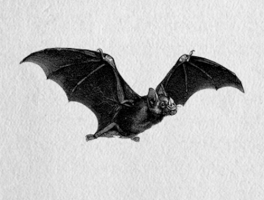 They’re creepy and they’re kooky, mysterious and spooky… remember the theme song? Maybe old enough like us to mix them up with the family residing at 1313 Mockingbird Lane.
They’re creepy and they’re kooky, mysterious and spooky… remember the theme song? Maybe old enough like us to mix them up with the family residing at 1313 Mockingbird Lane.